Saltwater fishing has undergone a transformation that puts catch and release at the forefront of most every fishery. It seems that regulatory actions on recreational fishing in the form of shorter, closed seasons, tighter size restrictions and dwindling bag limits not only makes it harder to keep a few fish to eat, but it also dramatically increases the numbers of fish returned to the water. We can debate the reasoning behind the recreational regulations in place, even for species with abundant stocks—take black sea bass or red snapper for instance—but when life offers lemons, why not make lemonade. Try adding a new wrinkle to your release practices that could help fisheries scientists and managers expand their database of knowledge while adding a little more excitement to your fishing. You, like a growing cadre of anglers, can become a citizen fish tagger.
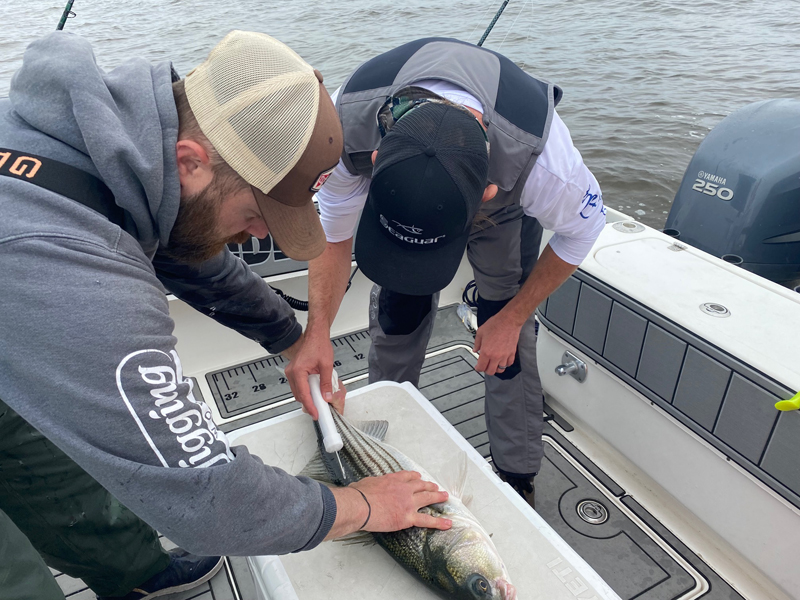
Gray FishTag Research, a leader in promoting fish tagging since its inception in 2015, was the brainchild of Bill Dobbelaer at Gray Taxidermy in Pompano Beach, Florida. He was concerned about the scarcity of independent tagging data to which fisheries’ scientists and managers had access. Without that information, it’s difficult to develop effective fishery management plans that positively affect conservation efforts and regulatory decisions which ultimately impact anglers.
“We recognized that fisheries managers are eager for relevant and accurate data to support their decisions in making smart policies to support sustainability for our fisheries,” Dobbelaer says. “They’re working with the best available science, but many tagging programs lack the ability or the overall desire to share their data, studies, and conclusions to support these regulations.”
Bill had the perfect starting point for such an ambitious project - professional charter captains and guides who work with Gray Taxidermy. Gray is a leader in conservation taxidermy, which means anglers don’t have to kill a fish to get a mount. Instead, they take accurate length and girth measurements, snap a quick picture and Gray creates an accurate fiberglass reproduction. When Bill broached his idea, he found a willing audience. The buy-in was overwhelmingly positive.
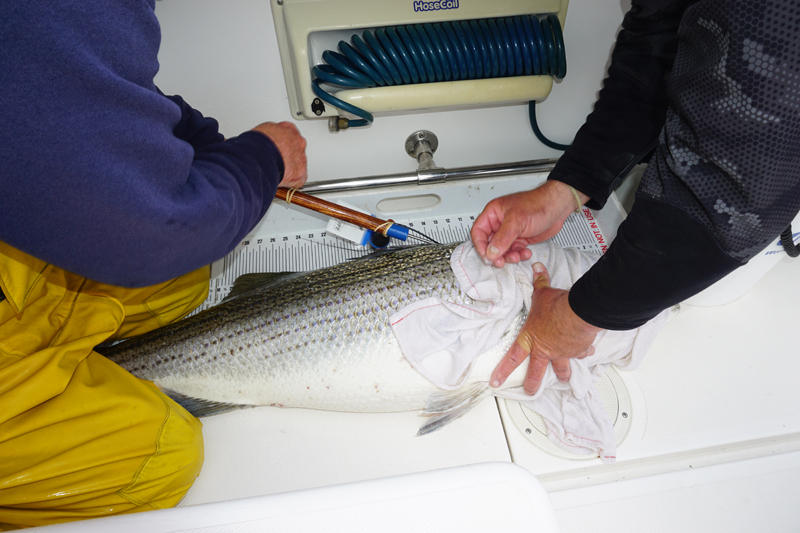
The next step was to form a 501c3 non-profit foundation with the goal of providing tagging kits to professionals for free, and training them to assure they are tagging fish safely and recording the data for the program correctly. It became a huge undertaking that required a full-time program director. Roxanne Willmer was chosen for that critical role, and she proved to be the perfect choice. Under her enthusiastic guidance, the program has grown to include over 10,000 professional captains and mates around the world - and it is generating a database of tagged fish and recaptures far beyond what they thought was possible.
One of the key functions of the program is to compile an open-sourced database, which means it is available to any group or organization that can use this important fisheries data. Record keeping includes the species, size and location of every fish tagged, the health of the fish at time of capture and release, and contact information for both the angler and the captain of the boat. Additionally, it will include similar information if the fish is recaptured, providing a snapshot of the possible range of the fish and growth rate.
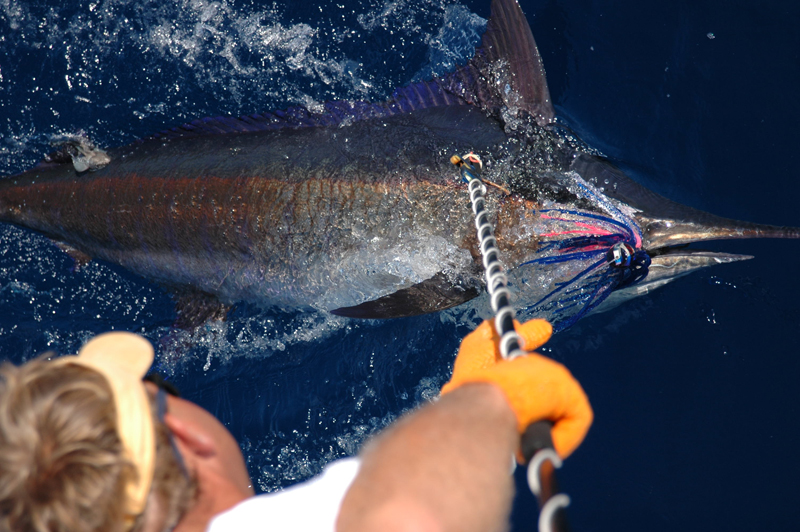
“Conservation first starts with awareness,” Roxanne says. “The GFR tagging model is like no other. When we place tagging supplies in the hands of charter captains, we’re not only creating usable data we are also creating awareness among thousands of anglers around the world. Every day our captains engage their anglers in responsible fish tagging and reporting while introducing young anglers, sometimes for the very first time, to the benefits of catch and release. When one of our captains tags a fish, he is engaging four to six anglers on every charter trip. We believe our model to engage the charter sportfishing professional by offer tagging supplies at no cost continues to be the key to accumulating accurate data and the overall success of our GFR program.”
As word of the program expanded beyond the professionals, queries from tournament teams and private boat anglers started to arrive. Gray is now working to train and accommodate as many as possible as quickly as possible. This is where you can become part of the program, as both a tagger and sponsor. In the private boat tagging model, the boat owner becomes the lead tagger, recording the data while sharing the experience with his crew. He is the main point of contact with GFR while the angler responsible for the catch gets to name the fish, assist in measuring and recording the information, and becomes the recipient of return information, along with the boat owner, should the fish be recaptured. It’s pretty cool to have gamefish you named swimming around in the ocean carrying a tag that relates back to you. It fosters a greater interest in the fish you pursue and creates a deeper bond between angler and fish.
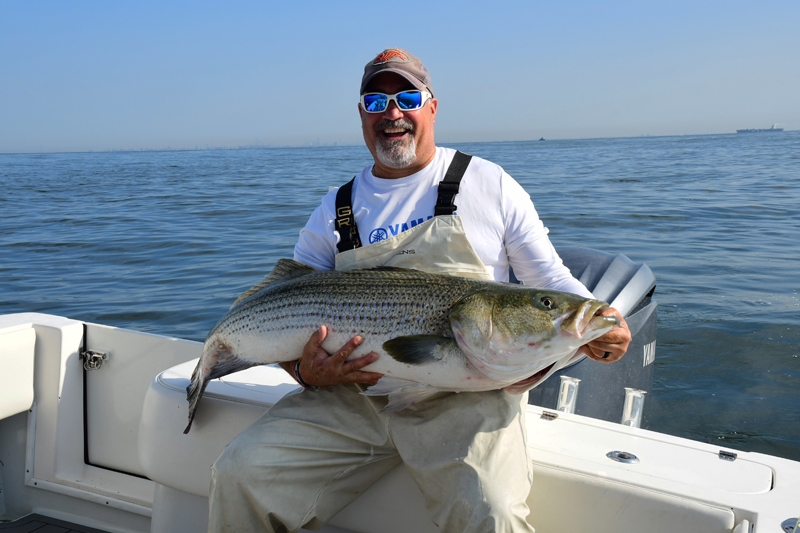
If you’d like to become part of the fish tagging revolution, start by going to Gray FishTag Research.org and spend some time reading the information on the site. It is fascinating to see how the program has evolved. As a non-profit foundation, GFR depends on donations from sponsors, most coming from the fishing tackle and boating industries, to provide free tags to professional captains. As a volunteer private boat tagger, your donation will come by purchasing a starter tagging kit and subsequent resupplies of tags, which are available through the website. Purchases and any additional donations you might make are tax deductible.
Roxanne told us she likes to speak personally with each new boat owner interested in becoming a GFR tagger. “It gives me the opportunity to assess each individual’s fishing knowledge, tagging experience if any, and get a feel for the fish they are most likely to catch and tag,” she explained. “GFR offers two starter kits. The first is for large pelagics such as billfish, tuna and sharks that includes an AFTCO® tag stick so the fish can be tagged in the water alongside the boat. It comes with an initial supply of dart-type streamer tags. The second is for species like striped bass or redfish that can be brought aboard and tagged on deck using a smaller handheld tag applicator and a spaghetti tag. Both kits come with an initial supply of tags and the applicators along with registration cards for each tagged fish that will guide you through the data gathering process. All you need is a pen and a measuring device. For fish brought aboard a scale like a Boga Grip or similar device can be used to add accurate weight information. For large fish measured boatside a streamer-type measuring tape that attaches to the leader and flows down the fish’s side in the water give a reliable length measurement.”
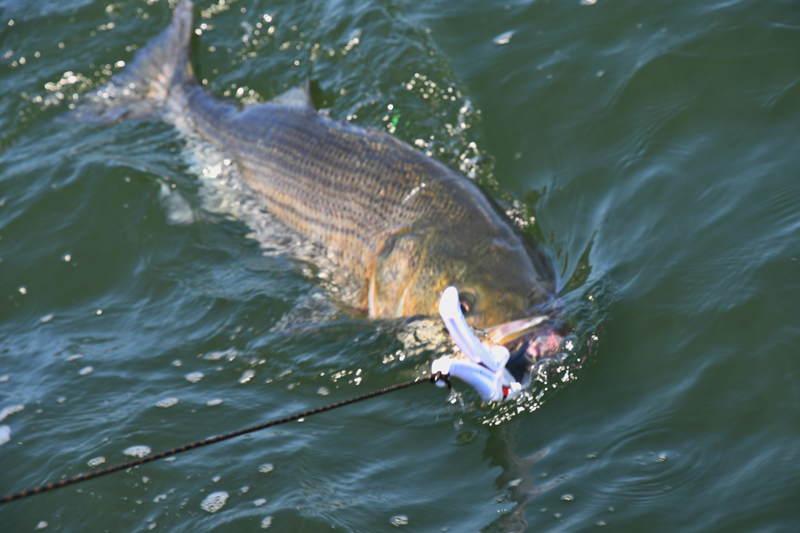
GFR captains and private boat taggers have been busy tagging gamefish around the world. Pick a species, from pelagics like mahi mahi to regionally popular target species like roosterfish, the database is growing in leaps and bounds. All species of billfish, tuna and inshore favorites like striped bass, redfish and cobia are swimming free with GFR tags. GFR also joined forces with The Fisherman magazine in the MidAtlantic states to tag striped bass, which quickly became the most tagged species in the GFR database.
An interesting project within the GFR program is the implantation of archival satellite tags that travel with the fish, release after a prescribed period of time, float to the surface and broadcast an amazing amount of data gathered during the that time period. These tags are expensive technology, upwards of $5000 per tag, and are only implanted by a handful of GFR associates who have been trained in their use. The sensor and memory unit is about the size of an incandescent light bulb and is attached to the fish with a connection that is programmed to disconnect after a few months. During that time, it records GPS location, water depth, water temperature at multiple intervals. When it releases, the bulb portion floats to the surface and links to a satellite and begins downloading the data. If the tag can be recovered the lab can gather even more detailed data and many have been. The data provides a detailed look into where the fish has traveled from the time it was released along with chartable data about the ocean conditions it encountered. The data being gathered by these tags has opened new areas of knowledge about a wide variety of gamefish.
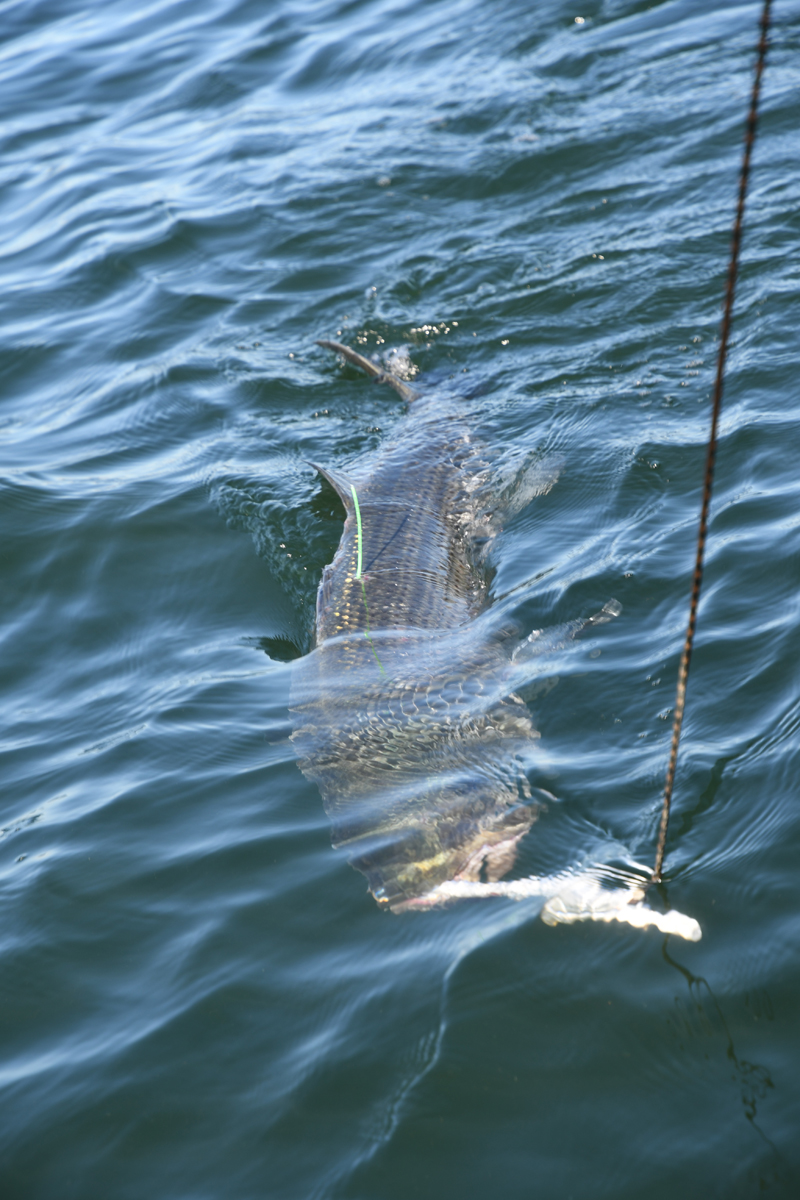
Several 40-inch plus striped bass were implanted with satellite tags thanks to donations from business and private sponsors over the past few years, and some of the data was a huge surprise for fishermen and scientists alike. Some migrated to destinations that no one had ever considered before. Several from the Hudson River spawning stock travelled as far as one hundred miles offshore to the submarine canyons along the edge of the Continental Shelf and remained there for weeks at a time in an area that is home to tuna and marlin. Was this some freak occurrence or is this a common practice among striped bass from some spawning stocks? Only additional tagging will tell.
If you’d like to join the thousands of captains, mates and the growing chorus of citizen taggers, we strongly encourage you to explore the Gray FishTag Research program. Catch and tag some fish. Name them and wait to see if your fish are recaptured. Learn more about where they roamed after you let them swim away alive. To inquire email Roxanne Willmer at Roxanne@grayfishtag.org and put a little science into your catch and release.
Back to Blue Life

Gray FishTag Research, a leader in promoting fish tagging since its inception in 2015, was the brainchild of Bill Dobbelaer at Gray Taxidermy in Pompano Beach, Florida. He was concerned about the scarcity of independent tagging data to which fisheries’ scientists and managers had access. Without that information, it’s difficult to develop effective fishery management plans that positively affect conservation efforts and regulatory decisions which ultimately impact anglers.
“We recognized that fisheries managers are eager for relevant and accurate data to support their decisions in making smart policies to support sustainability for our fisheries,” Dobbelaer says. “They’re working with the best available science, but many tagging programs lack the ability or the overall desire to share their data, studies, and conclusions to support these regulations.”
Bill had the perfect starting point for such an ambitious project - professional charter captains and guides who work with Gray Taxidermy. Gray is a leader in conservation taxidermy, which means anglers don’t have to kill a fish to get a mount. Instead, they take accurate length and girth measurements, snap a quick picture and Gray creates an accurate fiberglass reproduction. When Bill broached his idea, he found a willing audience. The buy-in was overwhelmingly positive.

The next step was to form a 501c3 non-profit foundation with the goal of providing tagging kits to professionals for free, and training them to assure they are tagging fish safely and recording the data for the program correctly. It became a huge undertaking that required a full-time program director. Roxanne Willmer was chosen for that critical role, and she proved to be the perfect choice. Under her enthusiastic guidance, the program has grown to include over 10,000 professional captains and mates around the world - and it is generating a database of tagged fish and recaptures far beyond what they thought was possible.
One of the key functions of the program is to compile an open-sourced database, which means it is available to any group or organization that can use this important fisheries data. Record keeping includes the species, size and location of every fish tagged, the health of the fish at time of capture and release, and contact information for both the angler and the captain of the boat. Additionally, it will include similar information if the fish is recaptured, providing a snapshot of the possible range of the fish and growth rate.

“Conservation first starts with awareness,” Roxanne says. “The GFR tagging model is like no other. When we place tagging supplies in the hands of charter captains, we’re not only creating usable data we are also creating awareness among thousands of anglers around the world. Every day our captains engage their anglers in responsible fish tagging and reporting while introducing young anglers, sometimes for the very first time, to the benefits of catch and release. When one of our captains tags a fish, he is engaging four to six anglers on every charter trip. We believe our model to engage the charter sportfishing professional by offer tagging supplies at no cost continues to be the key to accumulating accurate data and the overall success of our GFR program.”
As word of the program expanded beyond the professionals, queries from tournament teams and private boat anglers started to arrive. Gray is now working to train and accommodate as many as possible as quickly as possible. This is where you can become part of the program, as both a tagger and sponsor. In the private boat tagging model, the boat owner becomes the lead tagger, recording the data while sharing the experience with his crew. He is the main point of contact with GFR while the angler responsible for the catch gets to name the fish, assist in measuring and recording the information, and becomes the recipient of return information, along with the boat owner, should the fish be recaptured. It’s pretty cool to have gamefish you named swimming around in the ocean carrying a tag that relates back to you. It fosters a greater interest in the fish you pursue and creates a deeper bond between angler and fish.

If you’d like to become part of the fish tagging revolution, start by going to Gray FishTag Research.org and spend some time reading the information on the site. It is fascinating to see how the program has evolved. As a non-profit foundation, GFR depends on donations from sponsors, most coming from the fishing tackle and boating industries, to provide free tags to professional captains. As a volunteer private boat tagger, your donation will come by purchasing a starter tagging kit and subsequent resupplies of tags, which are available through the website. Purchases and any additional donations you might make are tax deductible.
Roxanne told us she likes to speak personally with each new boat owner interested in becoming a GFR tagger. “It gives me the opportunity to assess each individual’s fishing knowledge, tagging experience if any, and get a feel for the fish they are most likely to catch and tag,” she explained. “GFR offers two starter kits. The first is for large pelagics such as billfish, tuna and sharks that includes an AFTCO® tag stick so the fish can be tagged in the water alongside the boat. It comes with an initial supply of dart-type streamer tags. The second is for species like striped bass or redfish that can be brought aboard and tagged on deck using a smaller handheld tag applicator and a spaghetti tag. Both kits come with an initial supply of tags and the applicators along with registration cards for each tagged fish that will guide you through the data gathering process. All you need is a pen and a measuring device. For fish brought aboard a scale like a Boga Grip or similar device can be used to add accurate weight information. For large fish measured boatside a streamer-type measuring tape that attaches to the leader and flows down the fish’s side in the water give a reliable length measurement.”

GFR captains and private boat taggers have been busy tagging gamefish around the world. Pick a species, from pelagics like mahi mahi to regionally popular target species like roosterfish, the database is growing in leaps and bounds. All species of billfish, tuna and inshore favorites like striped bass, redfish and cobia are swimming free with GFR tags. GFR also joined forces with The Fisherman magazine in the MidAtlantic states to tag striped bass, which quickly became the most tagged species in the GFR database.
An interesting project within the GFR program is the implantation of archival satellite tags that travel with the fish, release after a prescribed period of time, float to the surface and broadcast an amazing amount of data gathered during the that time period. These tags are expensive technology, upwards of $5000 per tag, and are only implanted by a handful of GFR associates who have been trained in their use. The sensor and memory unit is about the size of an incandescent light bulb and is attached to the fish with a connection that is programmed to disconnect after a few months. During that time, it records GPS location, water depth, water temperature at multiple intervals. When it releases, the bulb portion floats to the surface and links to a satellite and begins downloading the data. If the tag can be recovered the lab can gather even more detailed data and many have been. The data provides a detailed look into where the fish has traveled from the time it was released along with chartable data about the ocean conditions it encountered. The data being gathered by these tags has opened new areas of knowledge about a wide variety of gamefish.

Several 40-inch plus striped bass were implanted with satellite tags thanks to donations from business and private sponsors over the past few years, and some of the data was a huge surprise for fishermen and scientists alike. Some migrated to destinations that no one had ever considered before. Several from the Hudson River spawning stock travelled as far as one hundred miles offshore to the submarine canyons along the edge of the Continental Shelf and remained there for weeks at a time in an area that is home to tuna and marlin. Was this some freak occurrence or is this a common practice among striped bass from some spawning stocks? Only additional tagging will tell.
If you’d like to join the thousands of captains, mates and the growing chorus of citizen taggers, we strongly encourage you to explore the Gray FishTag Research program. Catch and tag some fish. Name them and wait to see if your fish are recaptured. Learn more about where they roamed after you let them swim away alive. To inquire email Roxanne Willmer at Roxanne@grayfishtag.org and put a little science into your catch and release.
Back to Blue Life
